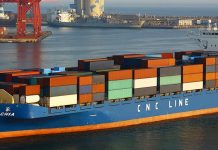
Work is progressing on Timor-Leste’s new US$490 million deepwater container port, with the main contractor shipping the first batch of steel pipes for the construction this week.
Also known as East Timor, the Southeast Asian nation became an independent sovereign state in 2002, after separatist struggles with Indonesia. Timor-Leste has turned to China for help in developing its economy, with the Chinese state-owned construction group China Communications Construction Company (CCCC) undertaking the port development.
The Timor-Leste government waived its regulations on explosions so that Chinese contractors could blast their way through a quarry in Tibar Bay, 10km west of the capital city of Dili, where the container port is to be built.
Container News was informed by CCCC officials that the company had commissioned Jiangsu Juxin Oil Pipe to manufacture almost 700 steel pipes for the construction of the terminal. Nine more batches of steel pipes will be shipped in the future.
Construction of Timor-Leste’s new terminal, which will handle 750,000TEU annually, will take 32 months. The works include building a 630m wharf, dredging up 3.53 million cubic metres of soil, reclaiming 27 hectares of land and applying foundation treatment to 19 hectares of land.
While having a new container terminal will boost the young nation’s economy and create jobs, the project also aims to forge closer trade ties between Timor-Leste and the rest of Asia.
The port is among 20 projects being built by Chinese state-owned companies in Timor-Leste, and this is one factor impeding the country from joining Asean (the Association of Southeast Asian Nations) bloc, which would be vital to its developing economy.
Some Asean countries, including Vietnam and the Philippines, have strained relations with China over the latter’s territorial claims to parts of the South China Sea. Having Timor-Leste as an Asean member has led to concerns that it could pave the way for increasing Chinese influence in Southeast Asia.
Martina Li
Asia Correspondent





